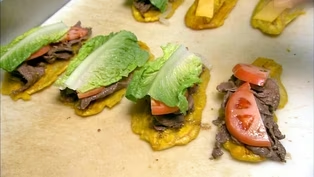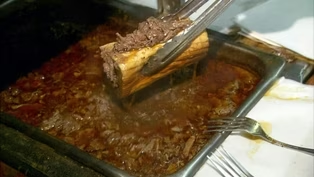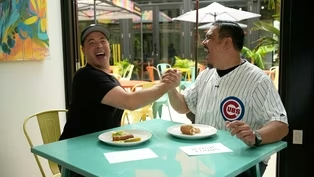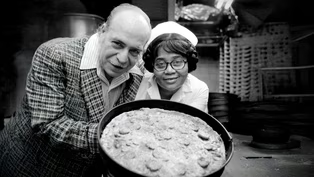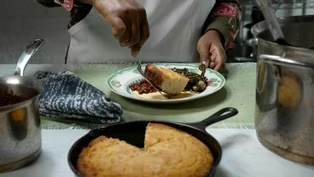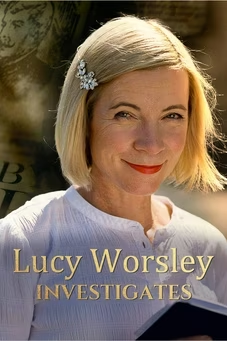Chicago Stories
Chop Suey and Chicago’s Chinese Restaurants
Clip: 10/17/2025 | 4m 40sVideo has Closed Captions
Chop suey became a popular dish at Chicago’s Chinese restaurants.
Dozens of chop suey houses operated in Chicago as early as 1905. Today, the Chinese food scene has expanded and diversified.
Problems playing video? | Closed Captioning Feedback
Problems playing video? | Closed Captioning Feedback
Chicago Stories is a local public television program presented by WTTW
Lead support for CHICAGO STORIES is provided by The Negaunee Foundation. Major support is provided by the Abra Prentice Foundation, Inc. and the TAWANI Foundation.
Chicago Stories
Chop Suey and Chicago’s Chinese Restaurants
Clip: 10/17/2025 | 4m 40sVideo has Closed Captions
Dozens of chop suey houses operated in Chicago as early as 1905. Today, the Chinese food scene has expanded and diversified.
Problems playing video? | Closed Captioning Feedback
How to Watch Chicago Stories
Chicago Stories is available to stream on pbs.org and the free PBS App, available on iPhone, Apple TV, Android TV, Android smartphones, Amazon Fire TV, Amazon Fire Tablet, Roku, Samsung Smart TV, and Vizio.

Chicago Stories - New Season!
Blizzards that brought Chicago to a standstill. A shocking unsolved murder case. A governor's fall from power. Iconic local foods. And the magic of Marshall Field's legendary holiday windows.Providing Support for PBS.org
Learn Moreabout PBS online sponsorship(bright music) - [Narrator] When the sun set on the downtown business district, neon would light up the sky.
For much of the 20th century, the loop had a second identity as a bustling entertainment and dining district.
- Right down from Marshall Fields, you had this incredible block that had Henrici's on the corner, famous old restaurant, a terrific Italian restaurant on the other corner.
- [Narrator] In the center of it all, set Hoe Sai Gai, an ornate Chinese restaurant.
- I grew up in a restaurant family.
Most of them came from canton, also known as Guangdong.
My great-grandfather came up to Chicago and he opened up his first restaurant.
That the Hoe Sai Gai, we had four gorgeous art deco and our new Vogue dining rooms.
All the stars and theater goers would go there.
- [Narrator] And the dish that was all the rage was chop suey.
- Everybody wanted chop suey.
Everybody wanted to try it.
Chop suey has some antecedents in China, basically chopped up food.
Bits of pork, bits of celery, because that's what you could find here, in some sort of brownish sauce.
It's not a dish that I enjoy.
It's really bland, but I can imagine it was thrilling for a lot of people to feel like, "Ooh, I've traveled to China."
I remember asking my Uncle George, "These restaurants, they were for the Chinese who lived at Clark and Van Buren, right?"
He said, "No, Monica, they're just for the white people."
- [Narrator] Dozens of chop suey houses operated in Chicago as early as 1905.
That number would grow to the hundreds.
Ironically, that growth was due to a federal law aimed at restricting Chinese immigration.
- The Chinese Exclusion Act marks a shift in American immigration policy towards a more specifically racially based policy.
There were like 100,000 Chinese people in the United States when the Exclusion Act gets passed.
The numbers are so small.
It's not just about numbers, it's about race.
- One of the big reasons they chose to pick on the Chinese was labor.
They felt like they were stealing native jobs.
- [Kristen] If you are a teacher or a student, you still can come.
Tourists were still welcome.
People who were merchants who didn't do any type of manual labor.
- [Narrator] In a clever interpretation of the ban, Chinese restaurateurs were able to qualify as merchants to gain entry.
- [Kristen] As a restaurant merchant, you had to bring tens of thousands of dollars and a white person had to vouch for you.
- [Narrator] Despite the huge popularity of Chinese restaurants, a widening anti-Chinese sentiment fueled racist suspicions and criticism.
(person singing in Chinese) - There are all sorts of editorials about how dangerous chop suey restaurants were, especially to young girls who might be lured into them.
Private booths, racy jazz music, located not far from Chicago's vice district.
Chicago tried to pass several laws.
Some wouldn't allow women into the restaurants after 10 o'clock, some of them said that you had to be an American citizen to have a restaurant license, and people said, "Well, that would exclude all Chinese restaurant donors."
And an alderman said, "So, you know, basically we can do without them, that's okay."
(person singing in Chinese continues) - [Narrator] None of the laws succeeded.
- [Monica] Today, there are three times as many Chinese restaurants as there are McDonald's.
- [Narrator] The eventual repeal of the ban in 1965 made way for an expanded Chinese food scene.
- And suddenly Chinese food wasn't just for Americans, it was Chinese food for Chinese people.
- The more you try and the more you taste, you learn to kind of crave that because there's also an exhilarating quality to experiencing new foods.
Chicago’s Handheld Street Foods
Video has Closed Captions
Clip: 10/17/2025 | 6m 50s | Affordable, handheld street food reigns supreme in Chicago. (6m 50s)
Chicago’s Italian Beef Sandwich
Video has Closed Captions
Clip: 10/17/2025 | 4m 17s | The hearty Italian beef sandwich was born in Chicago. (4m 17s)
The Crosstown Taste Test with Jeff Mauro and Omar Cadena
Video has Closed Captions
Clip: 10/17/2025 | 12m 4s | Jeff Mauro and Omar Cadena embark on a blind test taste of three iconic Chicago foods. (12m 4s)
The Origins of Deep Dish Pizza
Video has Closed Captions
Clip: 10/17/2025 | 5m 29s | Deep dish is the style of pizza most associated with Chicago. (5m 29s)
Video has Closed Captions
Clip: 10/17/2025 | 5m 20s | During the Great Migration, African Americans brought their way of cooking to Chicago. (5m 20s)
A Symphony on a Bun: The Chicago-Style Hot Dog
Video has Closed Captions
Clip: 10/17/2025 | 6m 27s | Immigrant influence created the Chicago-style hot dog. (6m 27s)
Providing Support for PBS.org
Learn Moreabout PBS online sponsorshipSupport for PBS provided by:
Chicago Stories is a local public television program presented by WTTW
Lead support for CHICAGO STORIES is provided by The Negaunee Foundation. Major support is provided by the Abra Prentice Foundation, Inc. and the TAWANI Foundation.
